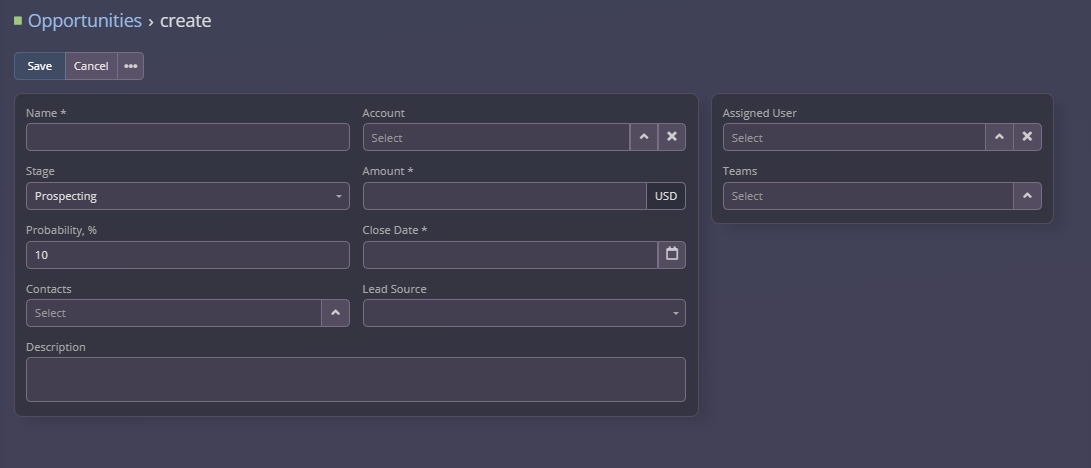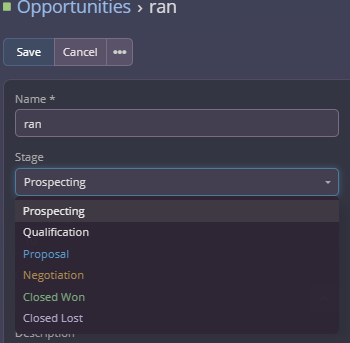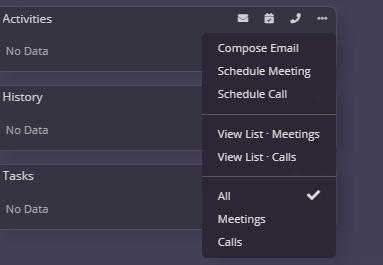Using Opportunities
The Opportunities module in ResellPortal CRM is designed to help you manage and track potential revenue-generating deals. Opportunities represent sales prospects that you’re actively working on, allowing you to monitor progress, forecast revenue, and prioritize efforts effectively. This guide will walk you through the features and best practices for using the Opportunities module.
1. Navigating to the Opportunities Module
-
Log in to your ResellPortal CRM dashboard.
-
Locate the main navigation menu on the left-hand side.
-
Click on Opportunities to access the module.
You’ll see a list view displaying all existing opportunities, including their names, stages, and expected close dates.
2. Creating a New Opportunity
To add a new opportunity:
-
Click the "Create" Button:
-
Fill Out Opportunity Details:
-
Opportunity Name (Required): Provide a descriptive name for the opportunity.
-
Account: Link the opportunity to an existing account.
-
Expected Close Date: Specify the anticipated date for closing the deal.
-
Stage: Select the current stage of the sales process (e.g., Prospecting, Negotiation, Closed-Won, Closed-Lost).
-
Probability: Enter the potential revenue value for this opportunity.
-
Assigned User: Designate a team member responsible for managing the opportunity.
-
-
Add Additional Information:
-
Include notes about the opportunity’s background, client requirements, or key stakeholders. in the description field.
-
-
Save the Opportunity:
3. Viewing and Editing Opportunities
Accessing an Opportunity Record:
-
From the Opportunities list view, click on the desired opportunity’s name to open its detailed record.
Editing Opportunity Information:
-
In the opportunity record view, click the Edit button at the top-right corner.
-
Update any necessary fields, such as stage, expected close date, or amount.
-
Click Save to apply the changes.
4. Tracking Progress Through Sales Stages
The Opportunities module uses stages to track where each deal stands in the sales pipeline. Common stages include:
-
Prospecting: Initial contact or discovery phase.
-
Qualification: Assessing the lead’s needs and fit.
-
Proposal: Presenting solutions or quotes.
-
Negotiation: Finalizing terms and addressing objections.
-
Closed-Won: Successfully closed deals.
-
Closed-Lost: Opportunities that did not result in a sale.
To update the stage:
-
Open the opportunity record.
-
Select the new stage from the Stage dropdown.
-
Save your changes.
5. Adding Activities and Notes
Keep a detailed record of all interactions and activities related to each opportunity:
-
Adding Activities:
6. Searching and Filtering Opportunities
Quickly locate specific opportunities using the search and filter options:
-
Search Bar:
-
Use the search bar at the top of the Opportunities list to find an opportunity by name, account, or stage.
-
-
Filters:
7. Closing Opportunities
When an opportunity reaches its conclusion, mark it as either "Closed-Won" or "Closed-Lost":
-
Open the opportunity record.
-
Update the Stage field to "Closed-Won" or "Closed-Lost." s shown above point 4.
-
Add a note explaining the outcome (e.g., reasons for loss or feedback from the client).
-
Save the record.
8. Best Practices for Managing Opportunities
-
Prioritize High-Value Deals: Focus on opportunities with the highest potential revenue or strategic importance.
-
Regularly Update Stages: Keep pipeline stages current to ensure accurate forecasting.
-
Collaborate: Use the "Assigned User" field to delegate opportunities effectively and maintain accountability.
-
Leverage Insights: Use reporting tools to identify trends and refine your sales strategies.
-
Automate Follow-Ups: Set reminders and workflows to ensure consistent communication with prospects.






